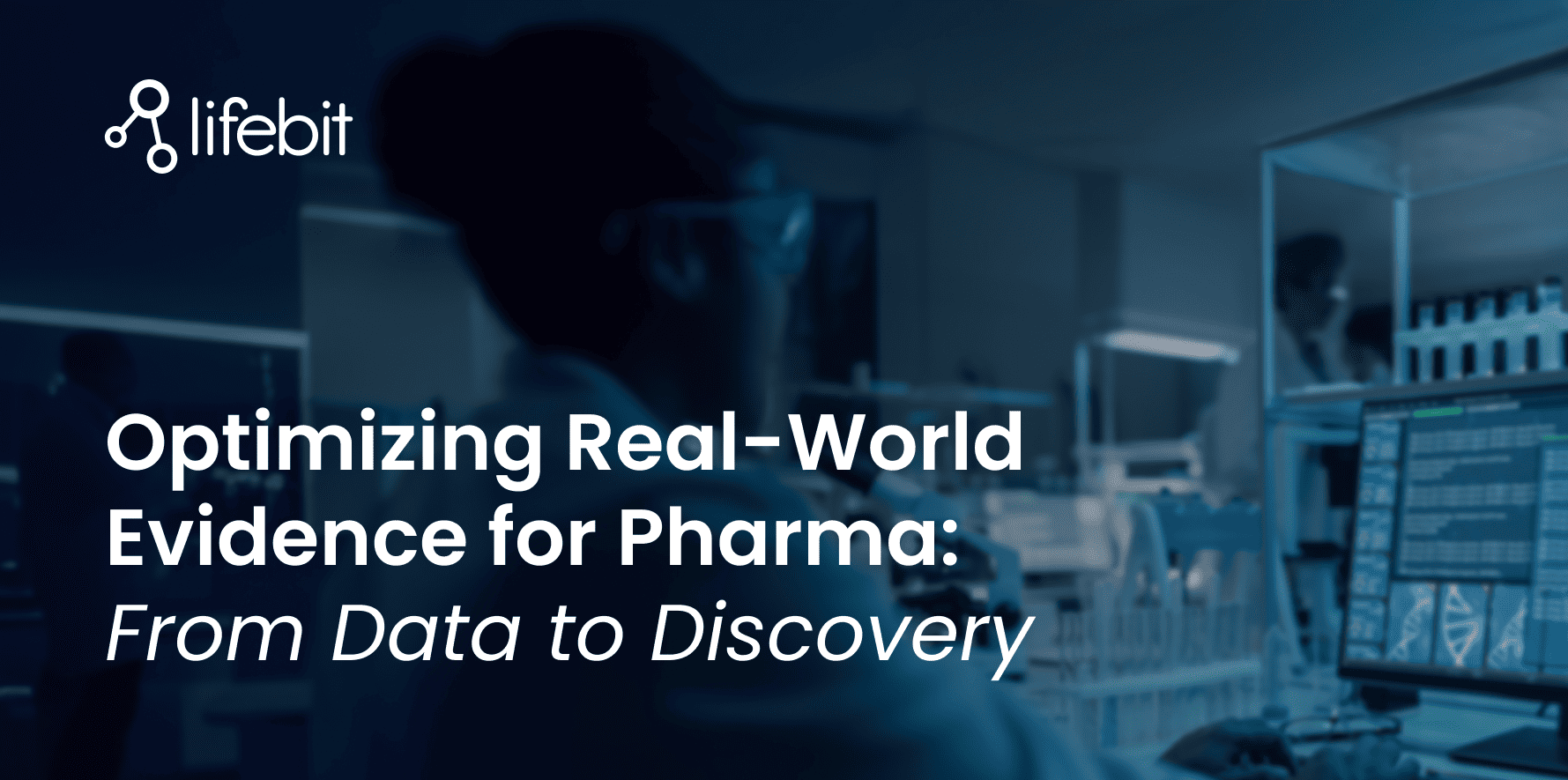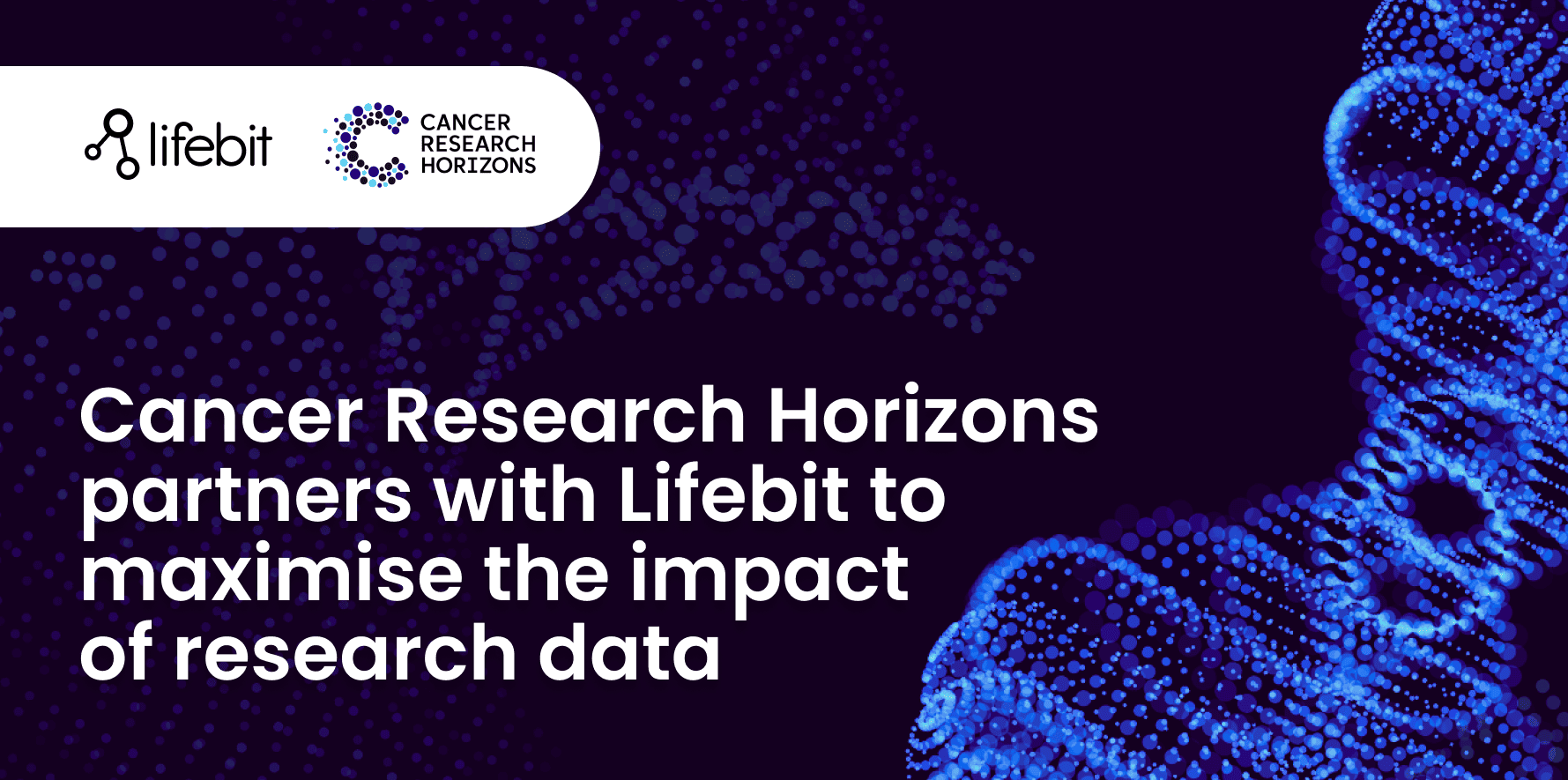Introduction
Identifying promising drug targets efficiently and effectively is key to drug development. However, traditional approaches that rely on experimental data from controlled environments (e.g., preclinical models or clinical trials) can take 10 to 15 years to get a drug to market. To speed up drug development, researchers are increasingly complementing data from clinical trials with real-world data (RWD) — a powerful resource integrating data from electronic health records (EHRs), insurance claims, biobanks, and more (Figure 1). Real-world evidence (RWE), generated from the analysis of RWD, can supplement data from clinical trials, epidemiological studies, and lab-based experiments to provide insights into the effectiveness, safety, and utilization of healthcare interventions in real-world settings. This can speed up translational research with improved data relevance to actual clinical settings in the real world.
In this blog, we explore how RWE can transform target identification, outline key strategies for its integration, and provide a roadmap for leveraging RWE to bridge the gap between basic research and clinical applications.
-1.png?width=1726&height=738&name=Key%20sources%20of%20RWD%20(1)-1.png)
Figure 1. Key Sources of RWD
The Case for RWE in Target Identification
RWE is actionable knowledge that can be acquired from analyzing and interpreting RWD. Robust scientific methods answer specific questions about treatment effectiveness, safety, or cost-effectiveness in real-world settings, and offer insights into how diseases manifest and progress in diverse patient populations outside of clinical trials. By analyzing both RWE and RWD, researchers can:
-
Uncover hidden patterns: Large-scale datasets enable the identification of disease subtypes or biomarkers that might be overlooked in smaller, controlled studies.
-
Validate targets in real population cohorts: RWE provides a real-world lens to evaluate the validity of potential targets across heterogeneous patient groups.
-
Accelerate hypothesis generation: Data from EHRs and biobanks can quickly generate hypotheses about novel targets or mechanisms of action, reducing the dependency on time-intensive lab experiments.
Overcoming Challenges and Maximizing Impact
While RWE's potential is vast, its integration into target identification is not without challenges (Figure 2). The challenges facing the integration of RWE into translational research include (but are not limited to):
-
Non-standardized data: Lacks uniformity in definitions, units, coding systems, or formats, making it challenging to compare, combine, or analyze across datasets. Inconsistent or incomplete datasets can skew results, necessitating rigorous data cleaning and curation processes.
-
Siloed data and security requirements: Biomedical data is often siloed. However, the movement of data into centralized repositories increases the risk of unauthorized access, interception, or loss. This is particularly critical when working with sensitive biomedical data.
-
Collaboration between subject matter experts: Translating insights from RWE into actionable targets requires collaboration between bioinformaticians, clinicians, and other researchers, who may not always have the same technical expertise around data.
.png?width=1295&height=780&name=RWE%20(1).png) Figure 2. Key Challenges Around the Use of RWD/RWE.
Figure 2. Key Challenges Around the Use of RWD/RWE.
How the Lifebit Trusted Research Suite Supports the Integration of RWE into Translational Research
Successfully leveraging RWE in translational research requires robust frameworks and technologies to ensure the data's quality, relevance, and usability. Lifebit’s Trusted Research Suite can achieve this:
-
Data harmonization and standardization: Translating disparate data sources into a common language using common data models ensures consistency and facilitates cross-study comparisons. The Lifebit Trusted Data Lakehouse™ supports this as well as seamless data retrievals, QA/QC, de-duplication, de-identification, linkage, harmonization and organization, making data both rapidly discoverable and ready for use.
-
Federated infrastructure: Lifebit’s Trusted Research Environment supports federated data analysis—where data stays at its source while algorithms run remotely—enabling access to diverse datasets while preserving patient privacy thereby complying with regulations like GDPR, HIPAA and more.
-
User-friendly tools: Low/no-code tools on the Lifebit Platform enable users of all technical backgrounds to extract meaningful insights from data. With intuitive, accessible tools, platforms can empower all users to analyze data efficiently, ensuring faster insights and improved decision-making in an increasingly data-rich industry.
Organizations like the Lupus Research Alliance (LRA) are using the Lifebit Platform and its patented federated infrastructure to access previously siloed data and combine genomics, clinical data, and RWE to accelerate translational research. Despite its serious impact, lupus therapies remain limited, with only three new drugs approved for lupus in nearly 70 years. With the Lifebit Platform, the LRA aims to address the urgent need for targeted therapies and new treatments for lupus.
Summary
Real-world evidence is transforming the landscape of target identification, enabling researchers to move from discovery to clinical application faster and with greater precision. By embracing RWE, translational research can align more closely with the complexities of real-world patient populations, resulting in therapies that are both effective and equitable.
To maximize the impact of RWE, stakeholders must invest in data infrastructure, advanced analytics, and collaborative ecosystems. With these elements in place, the roadmap to faster, more reliable target identification is clear—and the destination holds tremendous promise for patients worldwide.

About Lifebit
Lifebit is a global leader in precision medicine data and software, empowering organisations across the world to transform how they securely and safely leverage sensitive biomedical data. We are committed to solving the most challenging problems in precision medicine, genomics and healthcare with a mission to create a world where access to biomedical data will never again be an obstacle to curing diseases.



.png)









